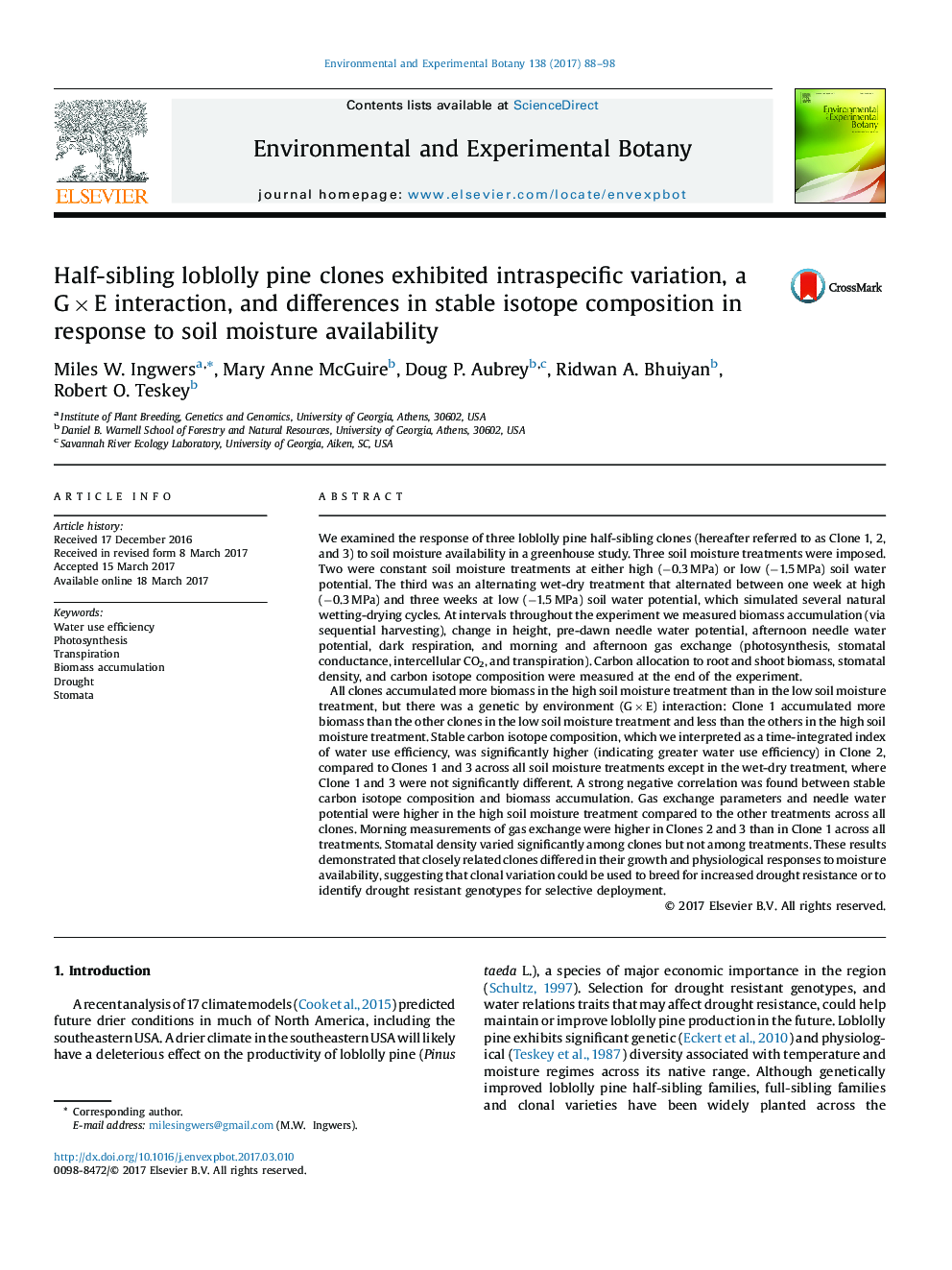| Article ID | Journal | Published Year | Pages | File Type |
|---|---|---|---|---|
| 5766666 | Environmental and Experimental Botany | 2017 | 11 Pages |
Abstract
All clones accumulated more biomass in the high soil moisture treatment than in the low soil moisture treatment, but there was a genetic by environment (GÂ ÃÂ E) interaction: Clone 1 accumulated more biomass than the other clones in the low soil moisture treatment and less than the others in the high soil moisture treatment. Stable carbon isotope composition, which we interpreted as a time-integrated index of water use efficiency, was significantly higher (indicating greater water use efficiency) in Clone 2, compared to Clones 1 and 3 across all soil moisture treatments except in the wet-dry treatment, where Clone 1 and 3 were not significantly different. A strong negative correlation was found between stable carbon isotope composition and biomass accumulation. Gas exchange parameters and needle water potential were higher in the high soil moisture treatment compared to the other treatments across all clones. Morning measurements of gas exchange were higher in Clones 2 and 3 than in Clone 1 across all treatments. Stomatal density varied significantly among clones but not among treatments. These results demonstrated that closely related clones differed in their growth and physiological responses to moisture availability, suggesting that clonal variation could be used to breed for increased drought resistance or to identify drought resistant genotypes for selective deployment.
Related Topics
Life Sciences
Agricultural and Biological Sciences
Ecology, Evolution, Behavior and Systematics
Authors
Miles W. Ingwers, Mary Anne McGuire, Doug P. Aubrey, Ridwan A. Bhuiyan, Robert O. Teskey,
